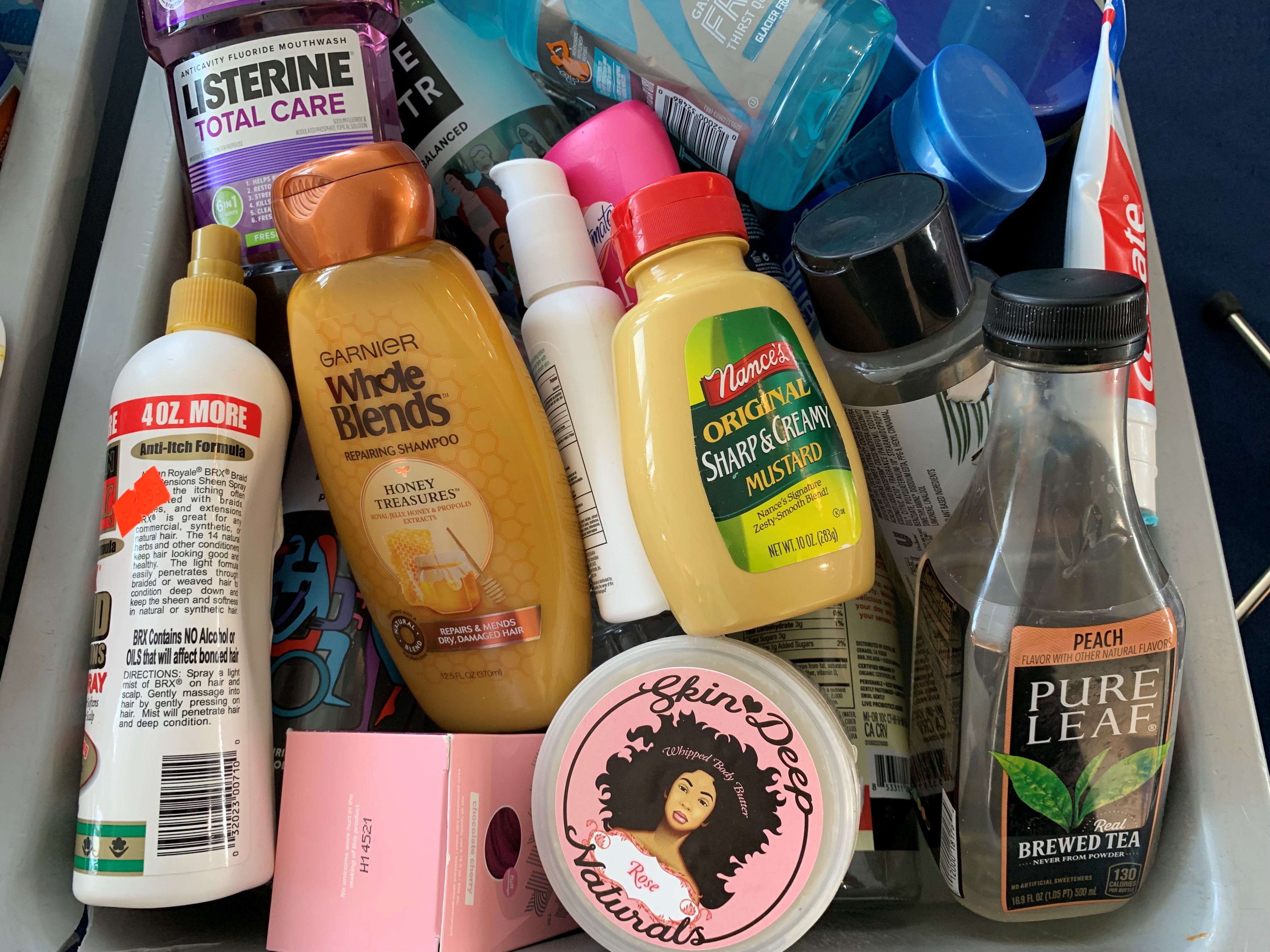 Oversized liquids, gels and aerosols are removed from carry-on bags. TSA officers give travelers the choice to re-pack them in a checked bag, return the item to their car, hand them off to a non-traveling companion or voluntarily surrender them to TSA for disposal. (TSA photo)
Oversized liquids, gels and aerosols are removed from carry-on bags. TSA officers give travelers the choice to re-pack them in a checked bag, return the item to their car, hand them off to a non-traveling companion or voluntarily surrender them to TSA for disposal. (TSA photo)
RICHMOND, Va.—Spring break travel crowds are back at Richmond International Airport (RIC) and Transportation Security Administration (TSA) officers are prepared to handle the increase in passengers. However, passengers who haven’t traveled recently are somewhat “rusty” in terms of remembering security checkpoint protocols, especially when it comes to remembering not to place prohibited items in a carry-on bag.
Due to the increase in travel volume, travelers are advised to get to the airport early. It’s going to be more crowded than it has been in quite a while with plenty of travelers who are flying for the first time in a very long time.
“Travel volume has picked up,” said Robin “Chuck” Burke, TSA’s Federal Security Director for the airport. “It’s important to get to the airport well ahead of your flight—at least 90 minutes. It’s likely to take a little longer to find a parking spot. There are lines at airline check-in counters and lines at the security checkpoints. Expect it and prepare for it by arriving well ahead of your departure time.”
Face masks continue to be required throughout all domestic transportation modes through April 18, including inside airports. Since the implementation of the face mask mandate in February 2021, there has been near 100 percent voluntary compliance at airport checkpoints. Authorities have reported similar levels of compliance in the surface and rail transportation modes, which together safely transport millions of individuals daily.
Advance planning and packing properly is key to a smooth security checkpoint experience. “We ask travelers do to their part by ensuring that they do not have any prohibited items with them at the checkpoint, and instead pack some extra patience,” Burke said. “Our TSA officers are seeing a lot of prohibited items at checkpoints, which results in more bag checks that can slow checkpoint lines.”
A lot of people haven’t traveled in a long time and they are either unfamiliar with or forgetful about what can and cannot go into a carry-on bag
The most common prohibited items that travelers bring to checkpoints are liquids, gels and aerosols that are larger than the acceptable limit of 3.4 ounces—shampoo, toothpaste, beverages, sun block, hand lotion, face cream, shaving cream, mouthwash and other toiletries. Each passenger may carry liquids, gels and aerosols that are 3.4 ounces (100 ml) or less through a checkpoint as long as those items fit into a one quart-sized, resealable bag. This is known as the 3-1-1 bag. Larger containers of liquids, gels and aerosols can be transported in checked baggage.
TSA officers are seeing travelers arrive at the checkpoint with bottles of water, juice, energy drinks, coffee and soda. The officers will give passengers the choice to exit the security checkpoint to drink their beverages in the terminal or allow TSA to dispose of it. Travelers may bring empty bottles or insulated flasks through checkpoints and fill them on the secure side of the checkpoint.
The exception to the 3-1-1 rule is that due to the pandemic, TSA is permitting travelers to bring up to one 12-ounce container of liquid hand sanitizer per passenger in carry-on bags until further notice. Passengers can expect that these large liquid hand sanitizers will need to be screened separately, which will add some time to their checkpoint experience.
TSA has also seen an increase in the number of guns that travelers bring to security checkpoints. So far this year, TSA officers have detected four firearms inside carry-on bags at Richmond International Airport. Guns must be unloaded and locked in a hard-sided case and transported as checked baggage only. All guns, ammunition and parts must be properly packed and declared at the airline ticket counter during the check-in process. TSA will issue a stiff financial civil penalty to violators of the firearms carriage regulations.
TSA offers several ways for travelers to find out if an item is permitted in a carry-on bag, checked bag, either or neither. The TSA web site has a feature on the homepage called “What can I bring?”. Type in the name of the item to learn if it should be packed in a checked bag or carry-on bag. The same handy feature is available on the free downloadable MyTSA app.
Travelers also can get assistance with their questions by tweeting questions and comments to @AskTSA or via Facebook Messenger, weekdays from 8 a.m. to 6 p.m. Travelers can call the TSA Contact Center at 866-289-9673 from 8 a.m. to 11 p.m. or 9 a.m. to 8 p.m. on weekends and holidays for additional assistance.
